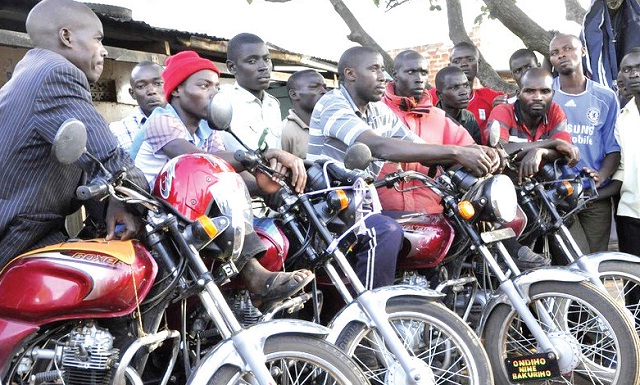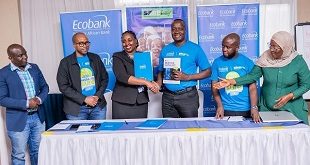
Four years later, Youth Livelihood Programmeimplementers assess its impact
Kampala, Uganda | HAGGAI MATSIKO | A business venture by a group of eleven youth in Katebe Village, Kamwenge district is thriving after they got a Shs 7.7 million interest free loan in 2015 from the Youth Livelihood Programme (YLP); a Shs 256 billion program intended to create jobs for youth and lift them out of poverty.
The members of Katebe Youth Produce Buying and Selling Project group buy farm produce from farmers during harvest, sell some and store the rest to fetch a higher price later. They have been able to pay back the loan in one year, bought a Canter truck at Shs 38m and were left with a capital base of Shs 25 million in cash and stock.
In Nsambya North Cell, Arua Municipality, another group also received Shs 7.4 million, paid it back and now have three acres of cassava worth Shs6 million and cash of Shs 500,000 in the bank.
The group says they initiated other projects, including a laundry service business which employs three people permanently with a monthly salary Shs 200,000 per person, gabbagecollection which employs 15 youth collectively earning Shs 1.3 million per month, and a hair salon project which also employs two people with a monthly salary ofShs 250,000.
On the other hand, in Usuk Sub- County, Katakwi district,the Koritok Produce Buying and Selling Youth Group ran into trouble when the Chairperson LC III, colluded with his son who was its chairperson and they hijacked a youth group project worth Shs10 million. The LC III Chairperson was arrested and Shs7 million recovered. The balance is being pursued.
In Butaleja District, police arrested nine youth, part of the 32 youth groups that received Shs360 million in 2013 and failed to pay back the money.
In Gulu, the District cashier withdrew Shs 256 meant for youth groups at once and misappropriated it. Police swung into action and the funds have been recovered and disbursed to other groups.
In Namayingo, two officials embezzled Shs70 million meant for all the seven groups. The officials were interdicted and the Anti-corruption Court is handling the case. The Sub County chief confessed to the offence and has refunded Shs24 million.
These revelations are at the heart of the latest progress report on government’s signature programme intended to lift youths out of poverty and unemployment. President YoweriMusevenilaunched it in January 2014.
The YLP is important because it is intended to address the youth unemployment problem, which poses social, political and economic challenges for the country, experts say.
Uganda has the youngest population in the world, with over 70 % of its population being under 30 years of age. And the unemployment rate in this group is over 80 %.
However, although on paper, the five-year project was allocated Shs 265 billion, as it nears its end, only Shs115 billion has been released to the programme. Over the four year period ending onJune30, 2017, the funding deficit is Shs150 billion or 56.67%.
In the latest report, Auditor General John Muwangasays inadequate funding of the programme may constrain the achievement of the intended programme objectives of improving livelihoods of the poor and un-employed youth.
In response, officials at the implementing ministry—of Gender, Labour and Social Development—explained that they would ensure that the YLP Funds are released in line with the initial approved amount for the five-year period.
But in 2016, the Auditor General’s report highlighted another problem facing the programme; that there is no proper accounting framework or detailed guidelines for accountability of the revolving funds.
This risked leading to improper accounting for programme funds, according to the AG’s report.
A review of the performance of the programme in 35 districts, revealed low recovery ranging, in some cases 0%. The AG’s report showed that by October 2016 only Shs5.501 billion (39%) had been paid of the Shs14.2 due for repayment by the beneficiaries. Inspections on sample basis also revealed some non-traceable group projects and a risk of losing Shs527 million, among others.
However, the implementers of the programmesay they have since made progress. By Jan. 30, this year, 13,107 projects had been financed, benefiting 163,130 individuals– 88,990 males and 74,140 females. And in total, Shs97.5 billion had been dispersed.
The bulk of the beneficiaries, 12, 472, are involved in livelihood support. Only 635 are involved in skills development.
Also, majority of the beneficiaries are school dropouts; 34.6%, followed by those who have only completed primary education 19.6%. Another 2.8% of the beneficiaries are youth with disabilities.
Because the beneficiaries have to have opened bank accounts, the programme is credited for having promoted financial inclusion.
 The Independent Uganda: You get the Truth we Pay the Price
The Independent Uganda: You get the Truth we Pay the Price




When are youth receiving the funds which they were asked to open accounts for YLP in June 2018 for other districts like Kiryandongo as Kampala youths and wakiso got theirs, why is the government segregating us?
We are a community project in Kasanje. Wakiso district called Dreame scheme Uganda working with vulnerable young people and children, we want to work with you.Tell us how we can do it, we have started 2 primary schools already after 15 years.
How can we access individual funds. We have initiatives that can skill and employ the youth but we lack funds. How can we be advised.
Thanks
If u do employee youth wat are the requirements to get employed with you I need to work pliz
hey,guys greetings from Luwero district
This is Oyster projet fund for nutrition and skills development for children.
we’ve written to ask for assistance in our project. if possible you can invest some money in our project and also we have a group of youth in this project.will it be possible then ?
Thanks